Every Saturday, Canaltech collects the astronomical photos that NASA has chosen to highlight during the week. Here you can see beautiful images of the Artemis I mission and more.
Ready to check out the latest images highlighted by NASA on the website Astronomy Picture of the day🇧🇷 This week you can find some photos showing the progress of the Artemis I mission, which brought the Orion spacecraft to the Moon: one of the most fascinating images shows the Earth, the Moon and part of the spacecraft, all photographed together.
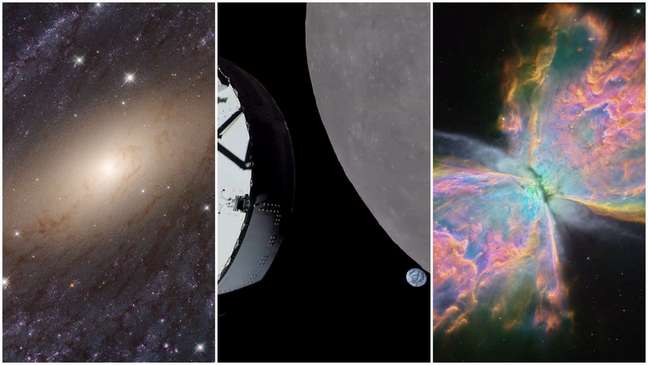
There are still images of colorful nebulae, star clusters and even a large galaxy, which is striking in the beauty and detail of its spiral arms.
Look down:
Saturday (11/19) — Launch of the Artemis I mission
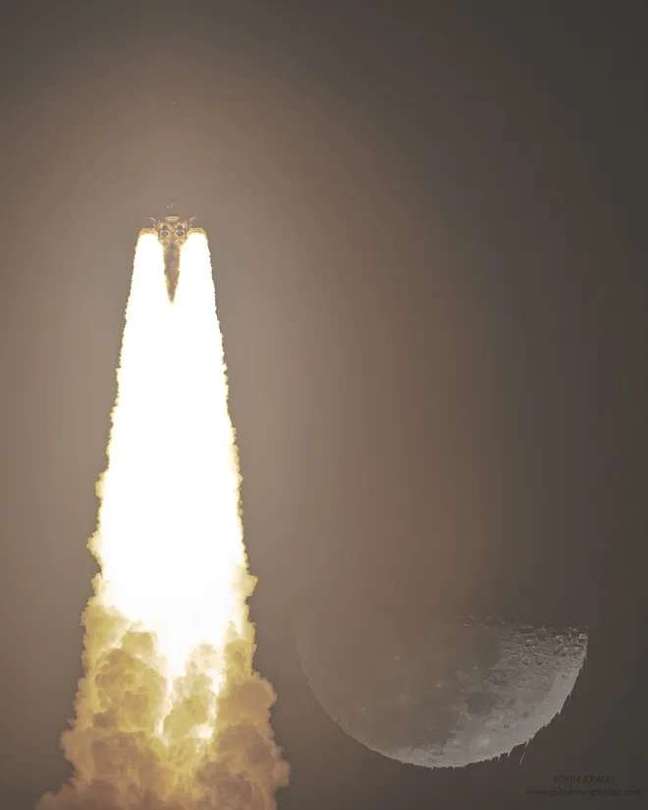
It was November 16 that the Space Launch System (SLS) rocket left Kennedy Space Center’s Platform 39B, marking the start of the Artemis I mission and directing the Orion capsule to the Moon. The spacecraft continued on its journey to enter a distant retrograde orbit around the Moon.
In the photo, the highlight is due to the solid engines and thrusters of the SLS rocket. Pressure waves generated by the passing vehicle caused ripples in the lunar disk, on the right side of the image.
Sunday (11/20) — Glow in the air
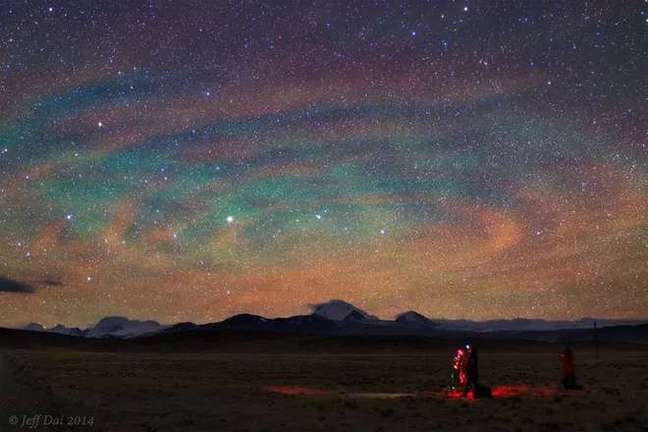
The colorful tones in this photo are a great example of an airglow. Unlike auroras, which are caused by interactions between electrically charged particles from the Sun and molecules in the atmosphere, airglow results from chemiluminescence.
In this case, the energy left by sunlight in the atmosphere is transferred to molecules in the upper atmosphere, which emit light to release the excess energy. Additionally, airglow can also occur when atoms and molecules ionized by sunlight collide and capture an electron.
Monday (11/21) — Butterfly Nebula
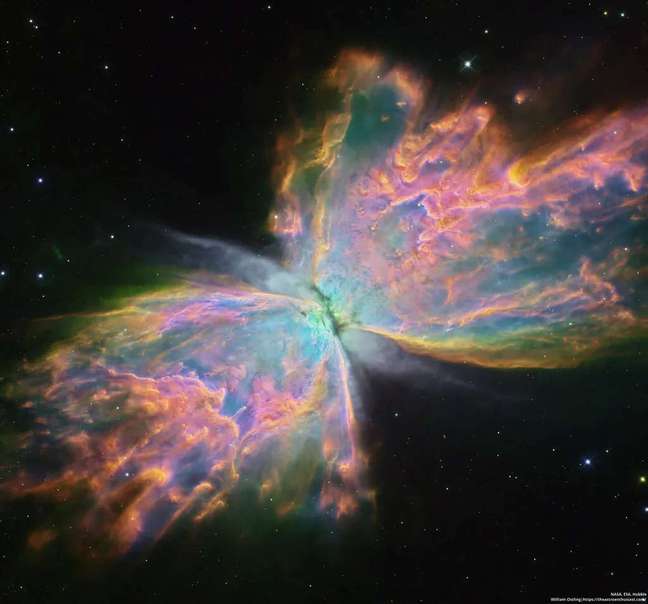
The colors and shapes of this planetary nebula come from the star NGC 6302, which is shedding its outermost layers as it reaches the end of its “life”. The layers formed this colorful structure resembling the wings of a butterfly, hence the object’s nickname.
These “wings” span about three light-years and have surface temperatures in excess of 200,000°C. The star is inside the nebula, but cannot be seen because it is hidden by dust.
- Learn more about photo of the butterfly nebula
Tuesday (11/22) — Star Cluster Duo
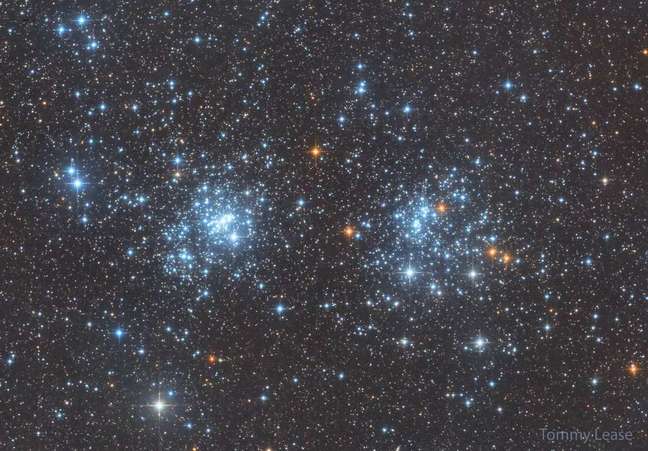
Here we have the pair of open clusters formed by NGC 869 and NGC 884. Located about seven thousand light-years from Earth, they lie towards the constellation Perseus, the Perseus, and contain stars that are younger and hotter than the sun.
In addition to their proximity, these clusters are formed by stars of similar ages, suggesting that they have a common origin. They can be observed with the naked eye in places away from light pollution.
- Learn more about photo of star clusters NGC 869 and NGC 884
Wednesday (11/23) — Orion, Earth and Moon
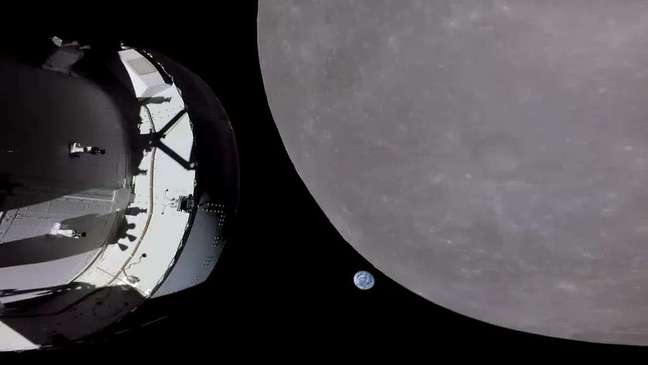
Earlier this week, the Orion spacecraft flew past the Moon, hovering just 130 km from the surface of our natural satellite. The procedure yielded the above photo captured on day six of the Artemis I mission, which shows the Earth “setting” behind the Moon.
The flyby was necessary for Orion to gain speed and thus be able to enter the distant retrograde orbit around our natural satellite.
- Learn more about photo of the Earth and the Moon taken by Orion
Thursday (11/24) — Dark Nebula LDN 1251
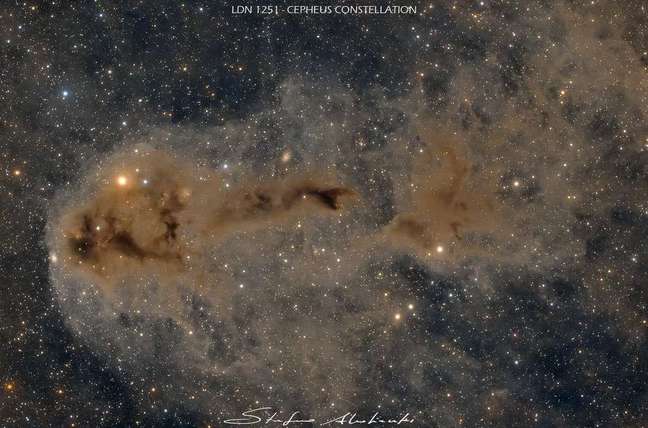
The structure in the photo above may have a “ghostly” shape, but it is simply the dark nebula LDN 1251. It is about a thousand light-years away and has stars forming within it – some of these newborn stars have stood out for their reddish glow in the center of the nebula.
This dust cloud is part of a complex of dark nebulae. In the photo, LDN 1251 is accompanied by distant galaxies in the background.
- Learn more about photo of the dark nebula LDN 1251
Friday (11/25) — Galaxy NGC 6744
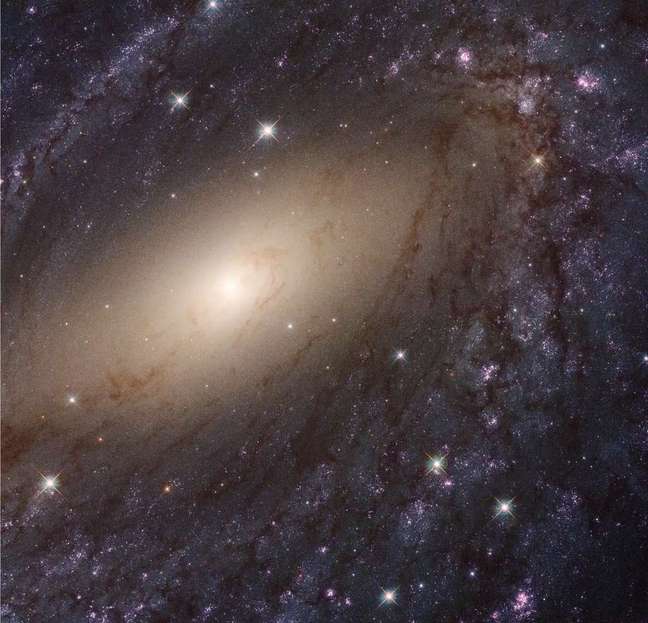
The galaxy NGC 6744 is located about 30 million light years from the Milky Way. Like our own galaxy, it is spiral in type, but it spans nearly 175,000 light-years, which is almost twice as long as the Milky Way!
In this photo captured by the Hubble telescope, we have access to about 24,000 light-years from its central region; there is its core, dominated by cold old stars. Already in its arms are young star clusters and star-forming regions.
- Learn more about photo of the spiral galaxy NGC 6744
Source: APOD
Trending on Canaltech:
- Thanos lists the only 6 heroes he considers worthy enemies
- Samsung will supply 3nm chips to Nvidia, Qualcomm, Baidu and IBM
- See new photos of the Moon’s surface taken by the Orion spacecraft’s flyby
- Weekly Updates | Linux on Windows and Android 13 on Galaxy in Brazil
- The scientist proposes a method to find out if humans live in the Matrix
- 10 sites that were very successful and no longer exist
🇧🇷The best content in your email for free. Choose your favorite Terra newsletter. Click here!
Source: Terra
Camila Luna is a writer at Gossipify, where she covers the latest movies and television series. With a passion for all things entertainment, Camila brings her unique perspective to her writing and offers readers an inside look at the industry. Camila is a graduate from the University of California, Los Angeles (UCLA) with a degree in English and is also a avid movie watcher.


![Tomorrow Belongs to Us: What’s in store for Wednesday 22 October 2025 Episode 2058 [SPOILERS] Tomorrow Belongs to Us: What’s in store for Wednesday 22 October 2025 Episode 2058 [SPOILERS]](https://fr.web.img6.acsta.net/img/95/64/95643daa3fa690142f3135b300b4ef9d.jpg)



